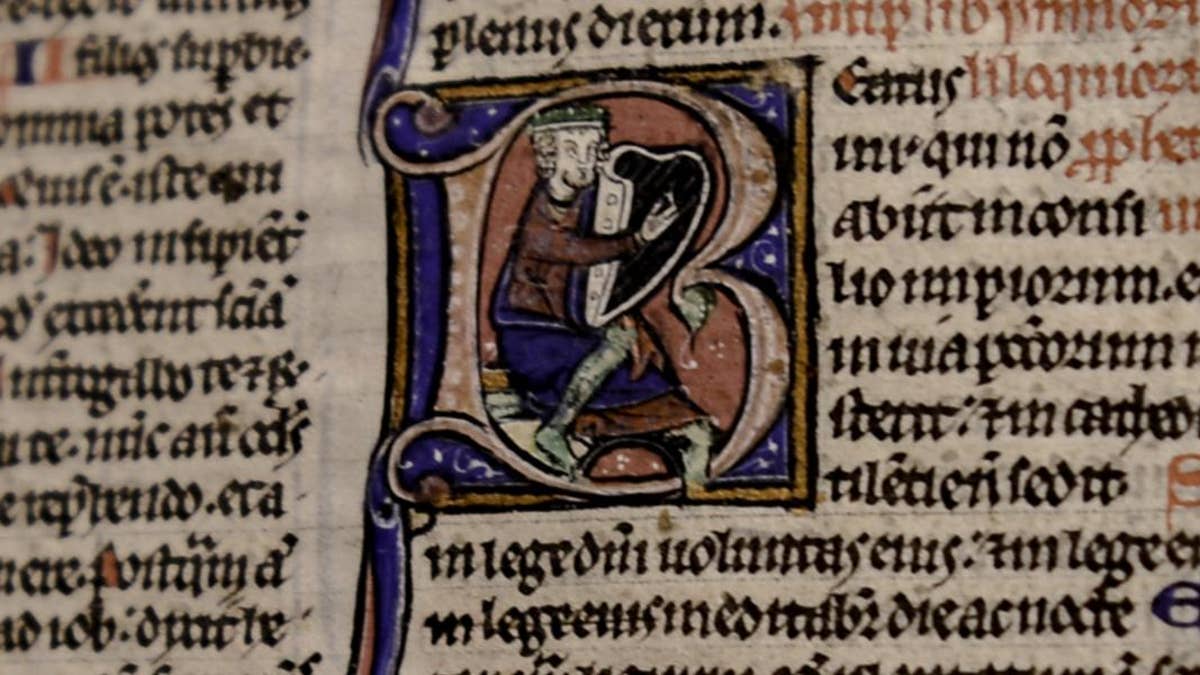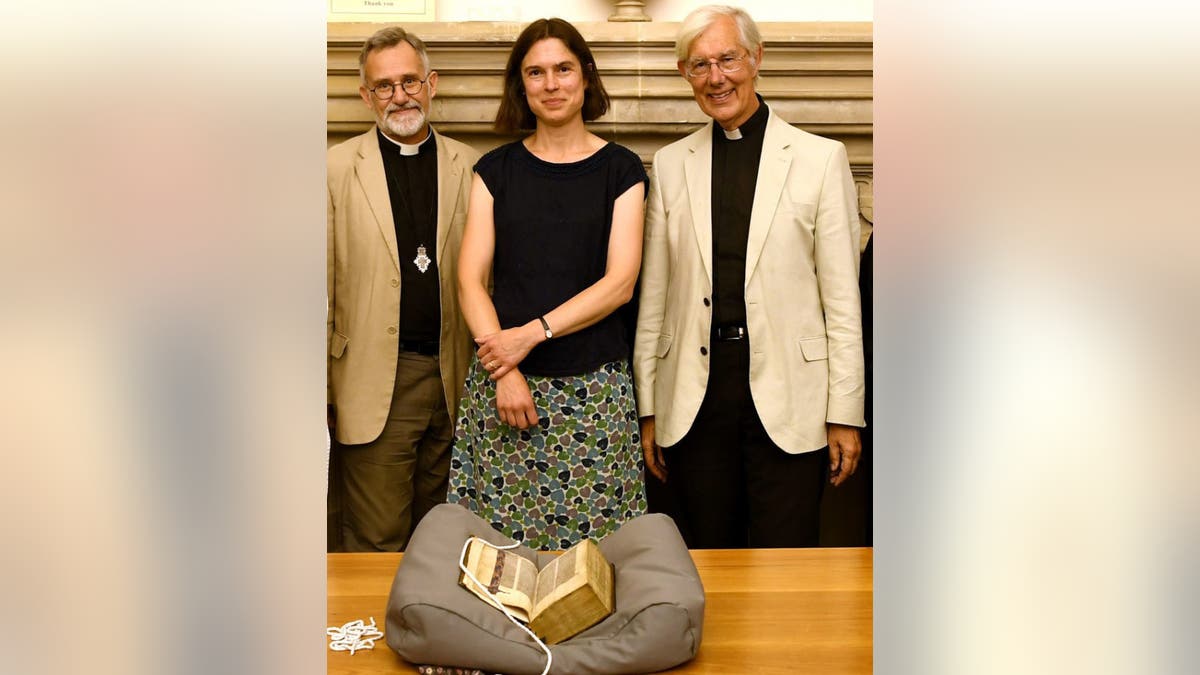
A page from the the Lyghfield Bible (Canterbury Cathedral)
An extremely rare medieval Bible has been re-discovered and returned to the cathedral it was taken from 500 years ago.
The Bible was written in the late 13th century, according to Canterbury Cathedral in the U.K., which is now in possession of the medieval artifact. Known as the Lyghfield Bible after the 16th-century Canterbury Cathedral monk that once owned it, the 690-leaf volume is written on parchment or vellum, which is made from animal skin. The Cathedral describes the pages of the Bible as almost “tissue-like” in quality.
Written in Latin script, the Bible, which was likely produced in Paris, also features intricate decorations on its pages.
MYSTERIOUS 'DEVIL COINS' DISCOVERED IN CHURCH
Canterbury Cathedral, which was been a place of worship for 1,400 years, is the “mother church” of the Anglican Communion. The World Heritage Site is also the seat of the Archbishop of Canterbury, the senior clergyman in the Church of England.

The Lyghfield Bible with (left to right) Canon Librarian, Revd Tim Naish, Head of Archives and Library Cressida Williams and the Dean of Canterbury, the Very Revd Robert Willis. (Canterbury Cathedral)
The Bible disappeared from the Cathedral’s collection of monastic books 500 years ago during the Reformation, when the Church of England split from the authority of the Pope and Roman Catholic Church.
Canterbury Cathedral’s monastic community was disbanded during the Reformation and most of volumes in its library were either dispersed, destroyed, or taken apart for reuse. Experts are not sure exactly what happened to the Lyghfield Bible but note that the volume was recently purchased for $129,416 from a private seller at a specialist sale of manuscripts in London.
STOLEN CHRISTOPHER COLUMBUS LETTER RETURNED TO THE VATICAN LIBRARY
The U.K.’s National Heritage Memorial Fund contributed $124,240 toward the purchase and additional funding was received from the Friends of the National Galleries, the Friends of Canterbury Cathedral and a private donation.
The Lyghfield Bible is one of only about 30 books that have survived from the Cathedral’s pre-Reformation Library, which once housed thousands of volumes.
“It is of the utmost significance to us to have here in our collections a copy of the core Christian text which was owned by one of the last monks of the medieval monastic community,” said Cressida Williams, Head of Archives and Library at Canterbury Cathedral, in a statement. “The Bible bears witness to the upheavals of the Reformation, a time which defined what the Cathedral is today, and will have a key role in telling visitors our story.”
KING OF RAGE: HENRY VIII’S BLOODTHIRSTY LETTER DEMANDS MONK’S BRUTAL DEATH
Other artifacts are also shedding fresh light on the U.K.’s rich history. For example, the bloodthirsty draft of a letter by King Henry VIII in which he demands a monk’s violent death be on public display in the north of England.
In the 16th-century death warrant, the famous king orders that the abbot of Norton Abbey in the North of England be “hung, drawn and quartered,” but then decides that the clergyman should just be hanged.
The 1536 letter, which is on loan from the U.K.’s National Archives, is on display at the Norton Priory Museum in Runcorn.
DEADLY DISCOVERY: POISONOUS BOOKS FOUND IN UNIVERSITY LIBRARY
Henry VIII’s reign was a turbulent period, marked by religious tension as the King severed England, Wales and Ireland’s relationship with the Catholic Church in Rome. The Acts of Supremacy in 1534 recognized the King as the Supreme Head of the Church of England.
Two years later, the king oversaw the Dissolution of the Monasteries, an attempt to destroy the country’s Catholic monastic system and seize its assets.
Last year, archaeologists in London uncovered the remains of Greenwich Palace, the birthplace of Henry VIII and Elizabeth I.
ARCHAEOLOGISTS UNCOVER THE LOST ROYAL PALACE OF HENRY VIII
The palace once stood on the site now occupied by the Old Royal Naval College in Greenwich, southeast London. Two rooms from the Tudor-era palace were found when the ground beneath the Old Royal Naval College’s Painted Hall was being prepared for a new visitor center.
Follow James Rogers on Twitter @jamesjrogers




















